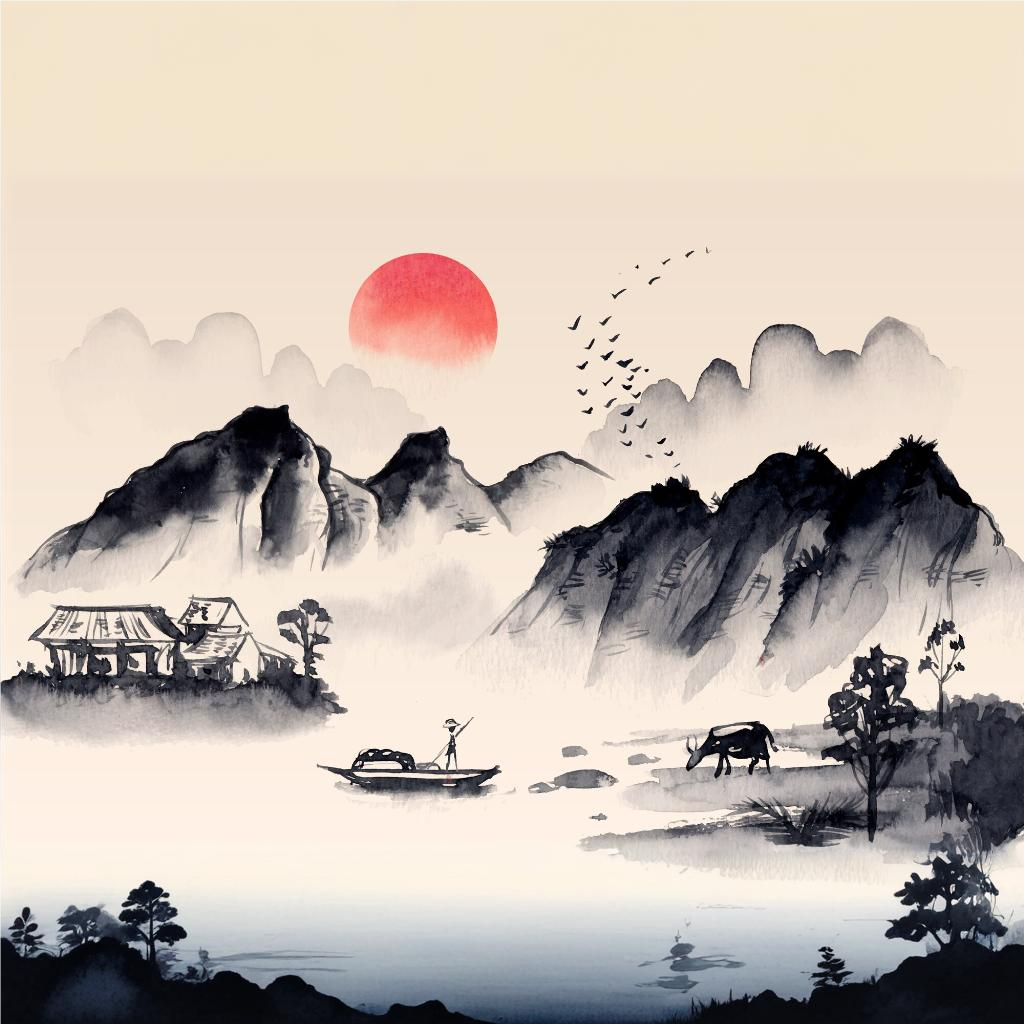What makes Chinese arts stand out in the global art scene and influence cultures worldwide?

Strong 8k brings an ultra-HD IPTV experience to your living room and your pocket.
Chinese arts, in their vast and multifaceted forms, have shaped not only China’s rich cultural heritage but also made an indelible mark on global art. The evolution of Chinese art spans thousands of years, presenting a captivating story of creativity, philosophy, and history. From the delicate brushstrokes of calligraphy to the intricate design of traditional Chinese paintings, each piece carries a deep sense of meaning and cultural significance.
The Historical Roots of Chinese Arts
Chinese art is rooted in an ancient civilization with a history dating back over 5,000 years. The evolution of Chinese arts can be divided into different dynastic periods, each contributing to the development of various art forms. The early stages of Chinese art, like ceramics and bronze casting, were vital to the formation of China's cultural identity. During the Zhou dynasty, for instance, bronze ware, often used for rituals, became a hallmark of Chinese craftsmanship, offering insight into the cultural and religious practices of the time.
The Tang Dynasty (618-907 AD) marked the flourishing of both Buddhist and Taoist art, laying the foundation for Chinese sculpture. The Song Dynasty (960-1279 AD) gave rise to some of the most famous forms of traditional Chinese painting, such as landscape painting, which emphasizes nature’s role in human life. This dynasty laid great importance on the interaction between the natural world and human existence, which continues to influence modern Chinese art.
The Ming and Qing dynasties brought about the perfection of porcelain painting, another key pillar in Chinese arts. The blue and white porcelain, known for its delicate patterns and the use of cobalt blue pigment, is one of China’s most recognized artistic exports. This period was also marked by the rise of exquisite furniture, embroidery, and intricate lacquer work.
Key Forms of Chinese Arts
Chinese Calligraphy: A Reflection of Philosophy
Perhaps one of the most profound expressions of Chinese arts is calligraphy, often referred to as the highest form of art in Chinese culture. Unlike Western writing, Chinese calligraphy is not merely about conveying information. It is a dynamic and expressive medium that reflects the artist's personality, emotions, and philosophical beliefs. The fluidity of brushstrokes, the use of ink, and the character structure contribute to a form of writing that is as much about aesthetics as it is about meaning.
Calligraphy, traditionally written with a brush and ink on rice paper, has evolved over centuries. The art form is deeply intertwined with Chinese philosophy, particularly Confucianism and Daoism. The practice of calligraphy, with its meditative process, aims to align the artist with cosmic forces, promoting harmony between nature and the individual.
Famous Calligraphers:
Throughout history, figures such as Wang Xizhi and Zhang Xu are celebrated for their mastery in this art form. Their works are still revered and studied by modern-day calligraphers, demonstrating the long-lasting influence of Chinese calligraphy.
Traditional Chinese Painting: An Intimate Dialogue with Nature
Chinese painting is another prominent form of art, which, like calligraphy, places immense value on capturing the essence of nature. Unlike Western art, which often emphasizes perspective and realism, Chinese painting emphasizes the relationship between man and nature, portraying a spiritual connection rather than mere physicality. This style of painting has been heavily influenced by Taoist and Buddhist philosophies, which view the world as an interconnected whole.
Landscape Paintings:
Among the many forms of Chinese painting, landscape painting holds particular significance. Artists often depict serene mountains, flowing rivers, and distant valleys, reflecting the importance of nature in Chinese culture. The works of artists like Zhang Daqian and Qi Baishi continue to inspire contemporary artists worldwide.
The technique used in Chinese painting is distinctive, focusing on brushwork that allows the artist to create layers of texture and depth using varying brush strokes. The concept of "shui mo" (water and ink) is a technique that incorporates both spontaneity and control, showing the duality inherent in nature.
Sculpture and Architecture: Embodying the Divine and the Earthly
Chinese sculpture is another significant element of Chinese arts, blending both spiritual and earthly elements. During the Tang and Song Dynasties, the Chinese created magnificent sculptures, particularly Buddhist statues, which were often placed in temples and shrines. These statues are not just representations of deities but also intricate works that convey deep spiritual meaning.
Traditional Chinese architecture, much like its sculptures, reflects harmony with nature. The Forbidden City, for instance, is not just a palace; it is a symbolic representation of the universe itself. The structure, layout, and design embody cosmic principles, aligning with Chinese beliefs about the relationship between heaven, earth, and humanity.
Famous Sculptures:
The Terracotta Army, created during the Qin Dynasty, is another iconic example. These life-sized clay soldiers were buried with the first Emperor of China, Qin Shi Huang, to protect him in the afterlife, showcasing the fusion of art with the spiritual and the cultural beliefs of the time.
Chinese Ceramics: A Legacy of Craftsmanship
Chinese ceramics, especially porcelain, have long been admired worldwide for their beauty and precision. The art of porcelain-making is said to have reached its peak during the Tang Dynasty, though it was during the Yuan and Ming dynasties that Chinese porcelain gained global renown. The unique characteristics of Chinese porcelain, including its translucent quality and smooth finish, made it a sought-after commodity in trade routes that spanned across continents.
Ming Dynasty Porcelain:
The blue-and-white porcelain from the Ming Dynasty is perhaps the most famous of all Chinese ceramics. Its intricate designs, often depicting scenes of nature, mythology, or historical events, are cherished by collectors and museums worldwide.
The Global Influence of Chinese Arts
The influence of Chinese arts extends far beyond China's borders. Over the centuries, Chinese art has left an indelible mark on cultures around the world. The Silk Road, which connected China to Europe and the Middle East, played a crucial role in the dissemination of Chinese artistic traditions. Chinese porcelain, silk, and lacquerware reached distant lands, influencing European art and craftsmanship.
In the modern era, Chinese art continues to shape global trends. The traditional techniques and philosophies behind Chinese calligraphy and painting have influenced many contemporary artists, while the enduring appeal of Chinese porcelain remains strong in international markets.
Chinese Arts in Modern Times
Today, Chinese art has not only preserved its ancient traditions but has also adapted to modern contexts. Contemporary Chinese artists like Ai Weiwei and Zhang Xiaogang blend traditional Chinese techniques with modern concepts, addressing social issues and global themes. These artists have gained international recognition, showcasing the ability of Chinese arts to evolve while retaining their cultural roots.
As global interest in Chinese culture grows, there is also a growing appreciation for Chinese art forms, leading to the establishment of galleries and museums dedicated to Chinese art. International collectors and art enthusiasts are increasingly seeking Chinese art, recognizing its cultural and historical importance.
Final Thoughts
Chinese arts stand as a testament to a civilization’s enduring creativity, philosophy, and ability to adapt through centuries. From calligraphy to ceramics, painting to sculpture, Chinese art offers an intricate and diverse exploration of beauty, history, and spirituality. Its profound impact on global culture is undeniable, influencing not only the East but the West as well. Whether you are an admirer of classical pieces or contemporary interpretations, the legacy of Chinese arts will continue to inspire and captivate audiences for generations to come.
Note: IndiBlogHub features both user-submitted and editorial content. We do not verify third-party contributions. Read our Disclaimer and Privacy Policyfor details.







